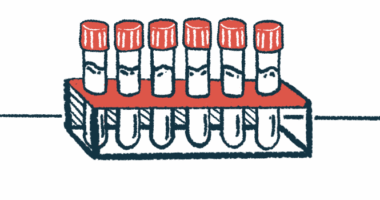Immune proteins activation at ALS diagnosis linked to progression
New study investigated role of proteins called cytokines in ALS

Researchers detected changes in the production of several immune signaling proteins, called cytokines, in the cerebrospinal fluid (CSF) — the liquid that surrounds the brain and spinal cord — of people with amyotrophic lateral sclerosis (ALS) at diagnosis.
These changes also correlated with certain clinical characteristics, and how quickly the disease progressed.
“Inflammatory activation [is] present in ALS at the time of diagnosis and may characterize patients at higher risk for disease progression,” the researchers wrote.
Their study, “Inflammatory signature in amyotrophic lateral sclerosis predicting disease progression,” was published in the journal Scientific Reports.
Little is known of role of cytokines in ALS and disease progression
Immune dysfunction and inflammation in the brain and spinal cord are thought to play a role in the development and progression of ALS, a condition marked by a loss of the nerve cells that control muscle movement.
In fact, several experimental therapies designed to address neuroinflammation in ALS are in development.
However, the role of immune signaling proteins, or cytokines, in the CSF as markers of ALS and disease progression remains unclear.
To address this knowledge gap, a team of researchers in Italy measured the levels of 18 cytokines in the CSF of 56 newly diagnosed ALS patients and 47 age- and sex-matched individuals without inflammatory or neurodegenerative disorders.
The results revealed a significant association between ALS diagnosis and the combined effect of multiple pro- and anti-inflammatory cytokines. These included interleukin-1-beta (IL-1-beta), IL-2, IL-4, IL-6, IL-7, IL-9, IL-13, IL-17, GCSF, and TNF.
“These findings suggest that a specific group of CSF inflammatory cytokines could be differently expressed [produced] in newly diagnosed ALS patients,” the researchers wrote.
Individually, the levels of IL-1-beta, IL-2, IL-4, IL-6, IL-9, IL-13, IL-17, and GCSF were significantly higher in ALS patients than in controls, the data showed.
The combined effect of the same cytokine changes seen at ALS diagnosis significantly correlated with shorter disease duration, meaning less time between symptom onset and diagnosis. Changes in these same cytokines were related to a higher ratio between counts of two types of immune cells: neutrophils, the white blood cells that act as the immune system’s first line of defense, and lymphocytes, which include B-cells and T-cells.
An association also was found between the combined effect of IL-5, IL-8, IFN-gamma, and MIP-1a, and older age at CSF sample collection via spinal tap.
Study focused on newly diagnosed ALS patients
The team then compared cytokine levels to disease severity at diagnosis, as measured by scores from the ALS Functional Rating Scale-Revised (ALSFRS-R). Subscores for bulbar involvement, which includes difficulty eating, swallowing, and/or speaking, were also assessed.
Lower ALSFRS-R total scores, a sign of worse disease severity, significantly correlated with elevated CSF levels of IL-4 and GCSF. At the same time, lower ALSFRS-R bulbar scores were related to higher IL-2, IL-4, IL-8, GCSF, and MIP-1a. However, after controlling for multiple comparisons, only worse ALSFRS-R bulbar scores significantly correlated with IL-4 and IL-8.
The team then divided patients into slow and medium/fast progressors to assess relationships between cytokines and ALS progression. Progression at diagnosis was defined as a patient’s ALSFRS-R total score divided by the time from symptom onset to diagnosis in months.
A faster rate of disease progression at diagnosis was significantly associated with the combined effect of the same group of multiple pro- and anti-inflammatory cytokines seen at ALS diagnosis. A slow progression rate was linked to the combined impact of IFN-gamma and eotaxin.
These results suggest a heterogeneous [variable] activation of the immune response in newly diagnosed ALS patients, with concurrent elevation of both pro- and anti-inflammatory cytokines.
Individually, higher levels of IL-2, IL-5, IL-6, IL-8, GCSF, MIP-1a, and lower eotaxin levels emerged in ALS patients with medium/high progression rates. After adjusting for multiple comparisons, however, the association with GCSF alone was statistically significant. Patients with medium/high progression rates also showed a higher neutrophils-to-lymphocyte ratio.
“These results suggest a heterogeneous [variable] activation of the immune response in newly diagnosed ALS patients, with concurrent elevation of both pro- and anti-inflammatory cytokines,” the researchers wrote.
Further studies are needed, however, to “clarify whether this CSF inflammatory profile is specifically associated with ALS,” the team stressed.
“Although our results, together with previous data, support the existence of a CSF inflammatory activation in ALS, it is unclear whether this inflammatory process represents an unspecific response to brain damage or is directly involved in neurodegeneration,” the researchers wrote.








